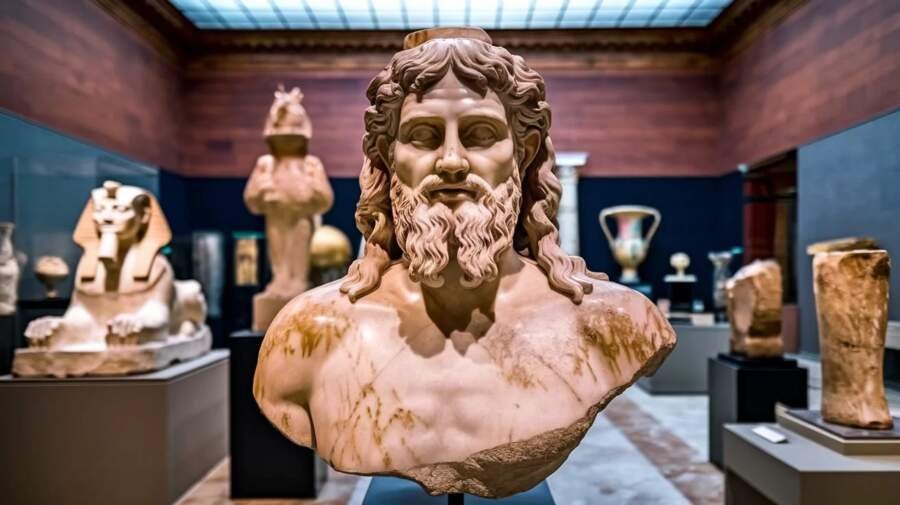Ancient Artz: A Journey Through Time and Culture
Art is a universal language that has connected humanity across time and space. Have you ever wondered how Ancient Artz has shaped our culture today? From the detailed carvings of the Egyptians to the mesmerizing pottery of the Greeks, art has been a powerful tool for storytelling, preserving history, and expressing emotions. Join us on this incredible journey as we explore the vibrant world of Ancient Artz, where every piece tells a story that transcends time.
Introduction to Ancient Artz
Art is more than just pretty pictures on walls; it’s a reflection of who we are, where we’ve been, and what we believe. The art of ancient civilizations provides a window into the past, offering insights into the daily lives, religions, and values of people long gone. It’s like having a conversation with our ancestors, hearing their stories, fears, and dreams through colors, shapes, and symbols.
The Birth of Art: Prehistoric Times
Our journey begins in the caves of prehistoric times, where the first artists etched their visions onto stone walls. Imagine standing in a dark cave, illuminated only by flickering firelight, surrounded by images of wild animals and mysterious symbols. This was not just art for art’s sake; it was a form of communication, perhaps even a ritualistic connection to the world around them. The famous Lascaux Cave paintings in France and the Altamira Cave in Spain are stunning examples of how art began as a crucial part of human culture.
Mesopotamian Art: The Dawn of Civilization
As humanity moved out of the caves and began building the first cities, art took on new forms and meanings. Mesopotamia, often called the cradle of civilization, is where writing, law, and monumental art first blossomed. The Sumerians, Babylonians, and Assyrians created intricate reliefs, statues, and ziggurats (temple towers) that told the stories of gods, kings, and mythical creatures. The famous Code of Hammurabi, carved on a black stone stele, is not just a legal document; it’s a masterpiece of Ancient Artz that highlights the power and order of the time.
Egyptian Art: A Glimpse into Immortality
Few cultures are as visually recognizable as ancient Egypt, with its grand pyramids, detailed hieroglyphics, and iconic statues of pharaohs. Egyptian art was deeply connected to their beliefs in the afterlife, serving as a guide to immortality. The grandeur of the Great Sphinx, the majestic tomb paintings of the Valley of the Kings, and the intricate jewelry of Tutankhamun all reflect a civilization obsessed with eternity. Art was not just decorative but a powerful symbol of life, death, and rebirth.
Greek Art: The Pursuit of Perfection
Greek art is often seen as the pinnacle of beauty and proportion. The Greeks were obsessed with harmony, balance, and the ideal human form, as seen in their sculptures, pottery, and architecture. Think of the Parthenon, standing proudly atop the Acropolis in Athens—a symbol of democracy, philosophy, and the human spirit. Greek pottery, with its detailed scenes of gods, heroes, and everyday life, provides a vivid snapshot of ancient Greek culture, philosophy, and values.
Roman Art: Power and Propaganda
The Romans borrowed heavily from Greek art but added their flair, creating works that emphasized power, conquest, and innovation. Roman art served as propaganda, showcasing the might of emperors and the glory of the empire. From the towering arches of triumph to the detailed mosaics of Pompeii, Roman art was about making a statement. The realistic busts of Roman leaders, capturing every wrinkle and frown, were meant to convey authority and humanize the rulers at the same time.
Indian Art: Spirituality in Stone
India’s ancient art is a vivid tapestry woven with spiritual symbolism and intricate details. The art of ancient India is deeply rooted in religion, with temples and sculptures depicting gods, goddesses, and scenes from epic tales like the Ramayana and Mahabharata. The serene faces of Buddha statues, the ornate carvings of Hindu temples like Khajuraho, and the delicate frescoes of Ajanta Caves speak of a civilization deeply immersed in spiritual exploration and artistic expression.
Chinese Art: Harmony and Balance
Ancient Chinese art is synonymous with elegance, balance, and a profound connection to nature. From delicate porcelain vases to the Great Wall’s colossal scale, Chinese art blends beauty with function. Calligraphy, painting, and sculpture were not merely artistic pursuits but disciplines that conveyed philosophical ideals like harmony, humility, and the importance of nature. The Terracotta Army of Emperor Qin Shi Huang is a remarkable testament to China’s artistic and engineering prowess, showcasing life-sized soldiers guarding the afterlife.
Mesoamerican Art: Mysteries of the Maya and Aztecs
The ancient civilizations of the Americas, such as the Maya and Aztecs, left behind incredible art that still puzzles and fascinates us today. Their art was heavily tied to their religious beliefs, with intricate stone carvings, towering pyramids, and detailed codices that recorded celestial events, rituals, and myths. The Maya were masters of stone and ceramics, creating intricate stelae that recorded the deeds of their rulers, while the Aztecs crafted elaborate masks and jewelry that spoke of their complex social and spiritual lives.
African Art: The Rhythm of Life
African art is as diverse as the continent itself, with each region offering its unique styles and meanings. From the bold masks of West Africa to the intricate beadwork of the Zulu, African art is deeply connected to music, dance, and ritual. It is not just visual but a dynamic expression of community, spirituality, and identity. The art of ancient African civilizations like Nok, Benin, and Great Zimbabwe reveals a rich heritage of storytelling, craftsmanship, and cultural pride.
Celtic Art: Spirals and Symbols
The art of the ancient Celts is full of mystique and symbolism, characterized by intricate knotwork, spirals, and animal motifs. Found in regions like Ireland and Scotland, Celtic art often adorned everyday objects such as jewelry, weapons, and stone crosses, blending the spiritual with the practical. The Book of Kells, an illuminated manuscript filled with vibrant colors and detailed illustrations, is one of the most exquisite examples of Celtic art that survives to this day.
Medieval Art: A World of Faith
Although often seen as a departure from the classical ideals of ancient Rome and Greece, medieval art brought its unique focus on faith and devotion. Churches and cathedrals were adorned with stunning stained glass, illuminated manuscripts, and detailed tapestries that told biblical stories. The art of this period was less about realistic representation and more about conveying spiritual truths, leading to a style that is both otherworldly and deeply human.
The Legacy of Ancient Artz in Modern Times
Ancient art is not just a thing of the past; it continues to influence modern art, design, and architecture. From fashion to film, the motifs and styles of ancient civilizations can be seen everywhere. The simplicity of Greek sculpture, the symbolism of Egyptian motifs, and the bold forms of African masks have all found their way into contemporary culture, proving that art truly transcends time.
Preserving Ancient Art for Future Generations
As we appreciate the beauty and history of Ancient Artz, it’s important to preserve these treasures for future generations. Many ancient artworks are at risk due to environmental factors, conflict, and neglect. Efforts by museums, archaeologists, and conservationists are crucial in protecting and restoring these priceless pieces of our shared human heritage.
Conclusion: Why Ancient Art Matters
Ancient Artz is more than just relics of the past; it’s a bridge that connects us to our ancestors. It’s a testament to human creativity, resilience, and the enduring desire to understand the world and our place within it. By studying and appreciating ancient art, we keep alive the voices of those who came before us, ensuring that their stories continue to inspire and teach us.
FAQs
- What is the oldest form of Ancient Artz?
The oldest form of Ancient Artz is believed to be cave paintings, such as those found in Lascaux, France, dating back around 17,000 years. - How did ancient Egyptian art influence later cultures?
Ancient Egyptian art influenced later cultures, particularly in their use of monumental structures, detailed carvings, and symbolic motifs. - Why is Greek art considered the pinnacle of Ancient Artz?
Greek art is often considered the pinnacle of ancient art due to its emphasis on idealized human forms, balance, and proportion. - What materials were commonly used in Ancient Artz?
Ancient artists commonly used materials like stone, clay, wood, metals, and natural pigments for their creations. - How is ancient art preserved today?
Ancient art is preserved through careful conservation efforts, including restoration, climate control, and protection against environmental damage.
Ancient art remains a fascinating and valuable part of our world, offering a timeless glimpse into humanity’s journey through time and culture.


Post Comment